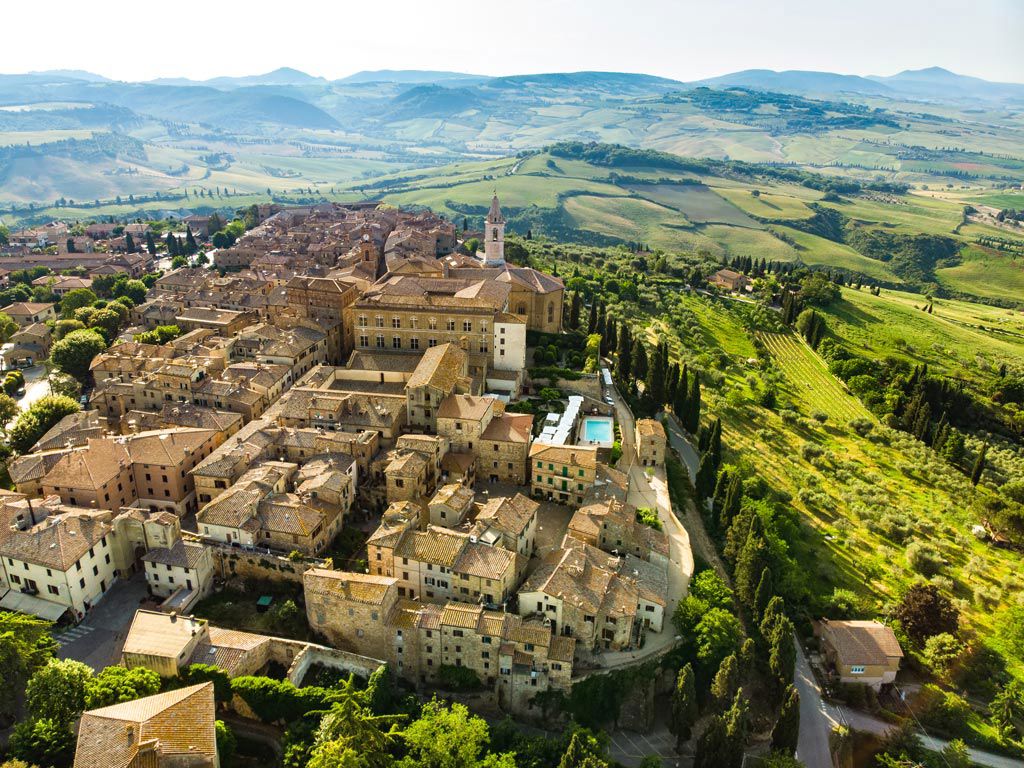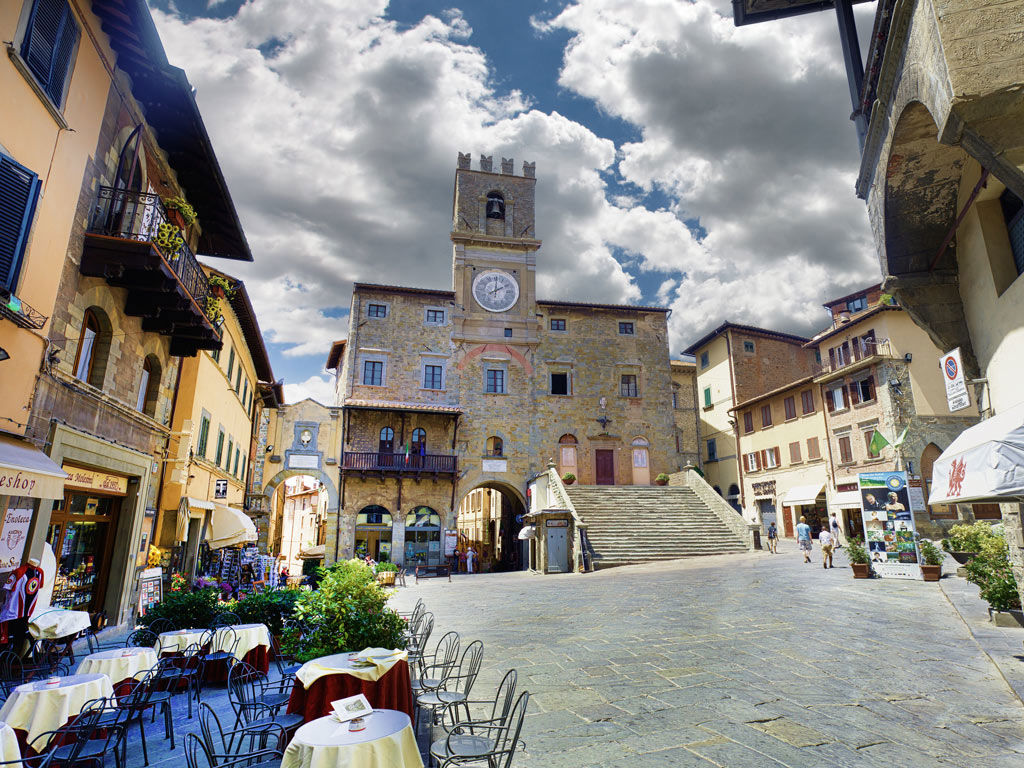Val di Chiana
Between Arezzo and Orvieto
The Val di Chiana is a large furrow that extends for about 100 km from Arezzo to Orvieto. It ncludes 31 municipalities between the Tuscan provinces of Arezzo and Siena and the Umbrian provinces of Perugia and Terni, from North to South.
The Val di Chiana, like the Val d’Orcia, is very rich in water, in fact here are the catchment areas of the two most important rivers' of central Italy, which distinguish it into two areas. To the North there is the Tuscan area, with the Arno river basin that crosses Florence, and Pisa to then flow into Marina di Pisa in the Tyrrhenian Sea and to the South there is the Roman area with the Tevere river basin, which it crosses Rome and flows into the Tyrrhenian Sea between Fiumicino and Ostia.
Thanks to the luxuriant nature, the Val di Chiana has been dominated since ancient times by the Etruscans and Romans who made these places particularly rich from a historical and cultural point of view, making it famous all over the world.
Trequanda is part of the municipalities of the Val di Chiana and is surrounded by some of the most beautiful places in this area.
The city of Pius II
Corsignano, today's Pienza is located along a scenic road that divides the Val di Chiana from the Val d'Orcia, not far from the consular Via Cassia, and surrounded in the typical hilly landscape that has made Tuscany world famous.
The town takes its current name from Pope Pius II, Pienza in fact means "city of Pius" to whom he was born, and which he himself wanted to rebuild in the mid-1400s, commissioning architect Bernardo Rossellino with the intention of building the ideal Renaissance city.
The perfectly preserved village was declared a UNESCO World Heritage Site in 1996.
Most of the artistic and cultural heritage can be seen in Piazza Pio II, the main square, where the most significant examples of rational urban design typical of the Italian Renaissance are headed.
The first building, very clearly visible, is the Cathedral opposite is the Palazzo Comunale and next to it are Palazzo Borgia and Palazzo Piccolomini.
Finally, near the historic center are a Romitorio, a complex of rooms carved out of the rock by the hermit monks, and a cave in which is preserved the statue of the Madonna with six fingers, linked to the miracle of St. John Damascene as evidence of the monks' relationship with the Orthodox religion.
Pienza is less than 20 km from Trequanda and is easily reached in about 20 minutes by car.
The city of Luca Signorelli and Gino Severini
Ancient Cortona Lucomone was part of the Etruscan Dodecapolis, was one of the twelve Etruscan city-states and is located in the province of Arezzo, about 30 minutes away from Trequanda.
Its Etruscan origins, documented as far back as the Iron Age echo, are still clearly visible today thanks to the 3 kilometers of perimeter walls surrounding the town, the numerous "melon-shaped" noble tombs and the monumental funerary altar adorned with sphinxes, the only one of its kind in Italy. Cortona is also famous for the discovery of the Tabula Cortonensis, a bronze plate with one of the longest inscriptions in Etruscan.
In 300 BC Cortona, like many other Etruscan cities, was also subjugated to Rome.
In the 13th century Cortona became a free commune, governed by u podestà who allied with Perugia to defend itself against the Aretines during war between Guelphs and Ghibellines.
The climate of this area perfectly mirrors that of the sub-Mediterranean areas of the Apennines where warm, sunny days prevail throughout the summer.
Cortona is definitely worth a visit thanks to the various attractions such as the MAEC - Museum of Etruscan Civilization, the Diocesan Museum, which preserves pere by Pietro Lorenzetti, Beato Angelico, Bartolomeo della Gatta, Sassetta and Luca Signorelli, the Fortress of Grifalco and the Basilica of Santa Margherita, the Tanella of Pythagoras and much more.









